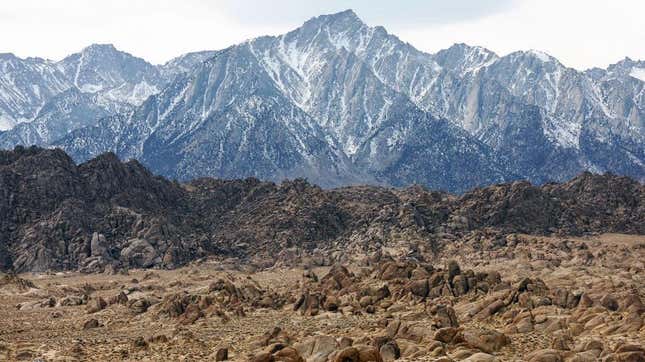
The snowpack in California is dangerously low after one of the driest winters in 128 years.
California Department of Water Resources officials set out last week to conduct the annual snowpack measurement at Phillips Station, just south of Lake Tahoe. They found only 2.5 inches of snow in the area, when average snow depth for the end of winter is about 5 feet there, the department said in a statement. Statewide, snow levels are just 38% of what they would normally be at this time of year, officials said.
“The conditions we are seeing today speak to how severe our drought remains. DWR has been planning for the reality of a third dry year since the start of the water year on October 1,” said Karla Nemeth, the DWR director.
There was some hope that this year would see a decent level of snowpack after 17 feet of snow fell over the Sierra Nevada mountains this past December. This broke several records, but that hope was short lived when only 9 inches of snow fell in January, followed by low snowfall in February and March. Just last week, the California Nevada River Forecast Center said that this was the driest January through March period on record for the state, based on data from three recording stations. “Unfortunately another below normal [precipitation] month,” the agency tweeted.
Snow is a crucial source of water for the region, after it melts and makes its way to reservoirs in the spring. Snowpack in California’s mountains makes up 30% of the state’s water, according to the Department of Water Resources. Governor Gavin Newsom recently ordered local water suppliers to begin aggressive conservation plans.
Last month, the National Oceanic and Atmospheric Administration reported that 60% of the continental U.S. will experience drought conditions this spring. The exceptionally dry, almost snowless winter is a symptom of what has been declared the worst drought the North American Southwest has experienced in 1,200 years. According to the U.S. Drought Monitor, all of California is currently experiencing abnormally dry conditions, and 93% of the state is experiencing severe drought conditions.